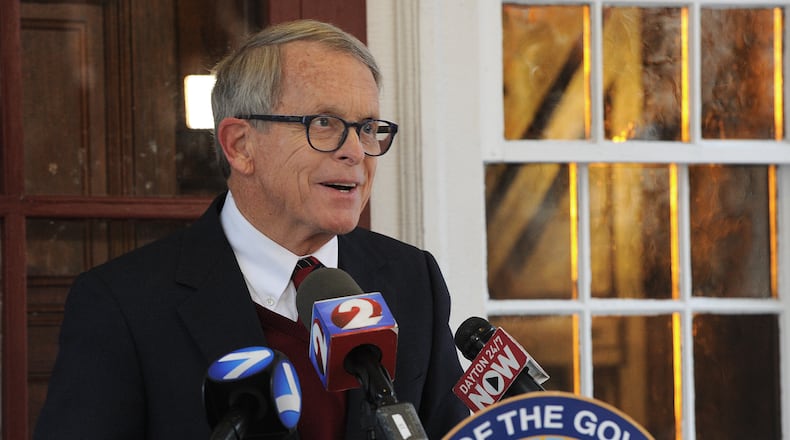“The workforce is exhausted. The exhaustion is palpable,” said Dr. Richard Lofgren from University of Cincinnati Health System. Cleveland Clinic reported that 970 caregivers on staff are unable to work because they’ve been infected or exposed to others with the virus.
The governor described it as “a runaway freight train.”
Coronavirus hospitalizations are continuing to climb in Ohio, with 4,358 patients in hospitals across the state as of Monday, according to the Ohio Department of Health.
“That is a 59% increase from just two weeks ago,” DeWine said. “We also currently have 1,079 patients who are in the ICU, which is again far higher than we have seen so far during this pandemic.”
Dr. Richard Lofgren, @uc_health: The growth in hospitalizations exponential. We're not planning for the surge - the surge is here. We're approaching the point where the influx of COVID patients will displace non-COVID care. pic.twitter.com/tppRIwWa4C
— Governor Mike DeWine (@GovMikeDeWine) November 23, 2020
Ohio Department of Health reported 11,885 new cases on Monday, which is inflated because it includes cases that had not been reported by two large lab systems in the prior two days.
The Ohio Hospital Association is now posting COVID-19 data each day on a new dashboard at ohiohospitals.org/covid19data.
The dashboard shows an aggressive climb in the number of patients with COVID-19, including highly sick patients who need an intensive level of care.
In Ohio hospitals, 1 in 4 patients are COVID-19 positive. That’s up from seven days ago, when 1 in 6 hospital patients had COVID-19. Sixty days ago, 1 in 31 Ohio hospital patients had COVID-19.
In Ohio intensive care units, 1 in 3 patients are COVID-19 positive. Sixty days ago, 1 in 16 ICU patients were COVID-19 positive.
COVID-19 patients typically stay longer in the hospital than those with other common respiratory illnesses.
“The inpatient side is filling up faster than we’re able to discharge patients,” said Ronda Lehman, president of the Lima market for Mercy Health.
About 27% of Ohio hospitals have reported a need for more caregivers, a sharp increase from just a month ago. Hospitals can sometimes fill gaps with travel nurses, but much of the country is now vying for these professionals.
Ohio Hospital Association spokesman John Palmer said “with the Midwest and much of the country also surging, additional staff just aren’t available.”
Lofgren said hospitals aren’t planning for the surge -- the surge is here.
“We’re approaching the point where the influx of COVID patients will displace non-COVID care,” said Lofgren, who is the leader of the southwest Ohio hospital coordinating zone, which includes the Miami Valley region.
In the southwest Ohio zone, there are 1,121 COVID-19 patients in hospitals, 253 in the ICU and 171 on ventilators, Lofgren said. He said in the region, nearly half of the hospitals were reporting a nursing shortage that day.
“The impact of these shortages on our workforce can’t be overstated,” he said. “They’ve been working extra hours. They’re really stressed trying to make sure they really continue to provide the highest quality of care, which they’ve been trained to do. This issue around burnout is very real.”
Dr. Andy Thomas of Ohio State University Wexner Medical Center said until the case numbers peak and start to decline, hospitalizations will continue to climb. “We can’t sound the alarm bell loud enough,” he said.
“With Thanksgiving coming up, keep within your bubble. If you have family coming over, hopefully they’ve been quarantining for 14 days,” Thomas said.

